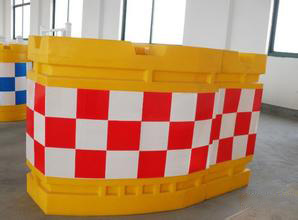There are three key processing points for manufacturing polyethylene rotomolding products.
1.The releasing agent
Due to the surface oxidation, the polyethylene powder may bond during heating. When the molds have some defects, the molten polyethylene will flow into these defects and form the embedment, and the finished products will be difficult to take from molds. In order to prevent this kind of situation, it’s necessary to add releasing agent in molds. There are several kinds of industrial releasing agent, but the polyethylene rotomolding products have a higher requirement of it, especially the requirement for thermal performance. Oil, wax and silicone are commonly used as releasing agent. These releasing agents have low cost and excellent releasing effect, but will cause some influence on products’ surface. Polydimethylsiloxane is another common releasing agent. It’s unnecessary to paint frequently and will not affected by temperature and cause influence on products, it also has the good releasing, but the price is more expensive.
2. The temperature control
There has a special phenomenon during polyethylene rotomolding process: the air between powder particles will form bubbles when melting the polyethylene, with the constant heating, these bubbles will disappear. Tests show that when the temperature is up to 150 ℃, the molten polyethylene will form bubbles with different sizes; when the temperature is up to 200 ℃, all bubbles will disappear. Therefore, strict temperature control is essential for the polyethylene rotomolding products. Sometimes, the heating time will be longer, especially when manufacturing the products with thick wall, the heating time will more than an hour. It’s necessary to take measures to prevent the reducing of material performance, usually will add antioxidants. However, when the heating time is too long or the temperature is over high, antioxidant is unable to prevent oxidation of the material. When the rotomolding products need longer heating time, the temperature should be decreased. It’s had better not to increase the temperature in order to curtail heating time; otherwise, the bubbles may not disappear completely, and will leave on products.
3.The cooling process
During cooling process, the temperature of molten polyethylene will reduce from 200 ℃ to near room temperature and the particles will change from disordered state to an ordered crystalline state. The crystallization needs time; the crystallization speed is related to the viscosity of molten polyethylene. When the molten polyethylene is been cooled rapidly, the viscosity will accelerate and hinder the formation of crystallization and affect the degree of crystallization. When the degree of crystallization is different, the density of polyethylene rotomolding products will also be different, as well as the physical performance. Therefore, when the cooling process is fast, the polyethylene products will have a lower density; when the cooling process is slow, the products will have a higher density. The polyethylene powders have certain density, however, due to different cooling speed, the density of polyethylene rotomolding products will also be changed.
